Top Tourist Attractions in Paro, Bhutan
If you are going to visit Bhutan and want to enjoy the beautiful valleys of Paro, then let us tell you about the top 10 places where you will experience immense pleasure. Located in the beautiful Paro Valley of Bhutan, Paro is a region rich in history, culture and natural beauty. This charming city offers a variety of incredible tourist destinations that reflect Bhutan’s unique heritage. Here is an in-depth look at some of the top attractions of Paro.
1. Paro Taktsang (Tiger’s Nest)
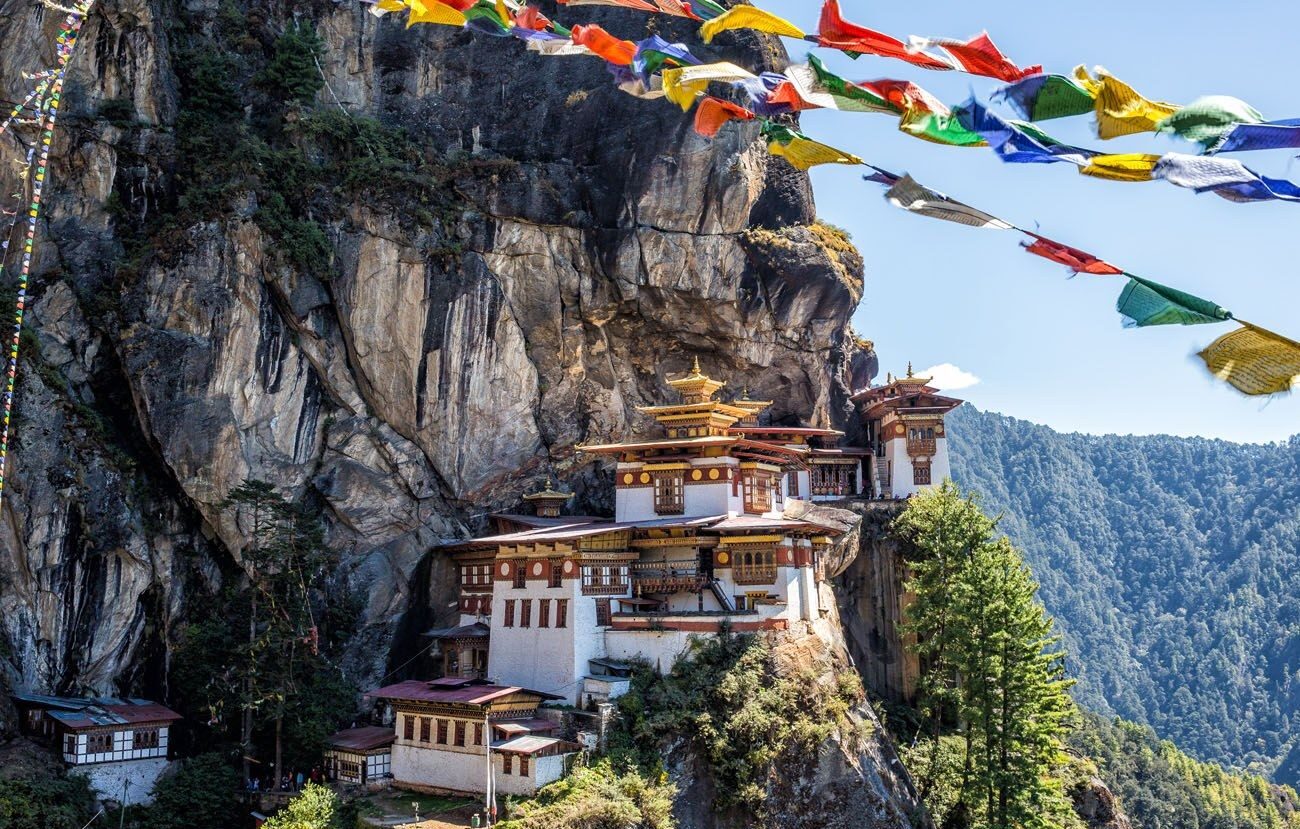
Overview:
Paro Taktsang, commonly known as the Tiger’s Nest, is one of Bhutan’s most iconic landmarks. This monastery, perched on the edge of a cliff at an elevation of 3,120 meters (10,240 feet), is a marvel of both natural beauty and religious significance.
Significance:
The monastery is a sacred site dedicated to Guru Rinpoche (Padmasambhava), who is believed to have meditated here in the 8th century. The legend says that Guru Rinpoche flew to this location on the back of a tigress, hence the name Tiger’s Nest.
Experience:
Visitors undertake a challenging yet rewarding hike through pine forests adorned with prayer flags. The trail offers spectacular views of the valley below and the monastery itself. Upon reaching the monastery, visitors can explore its numerous temples and soak in the serene spiritual atmosphere.
2. Rinpung Dzong
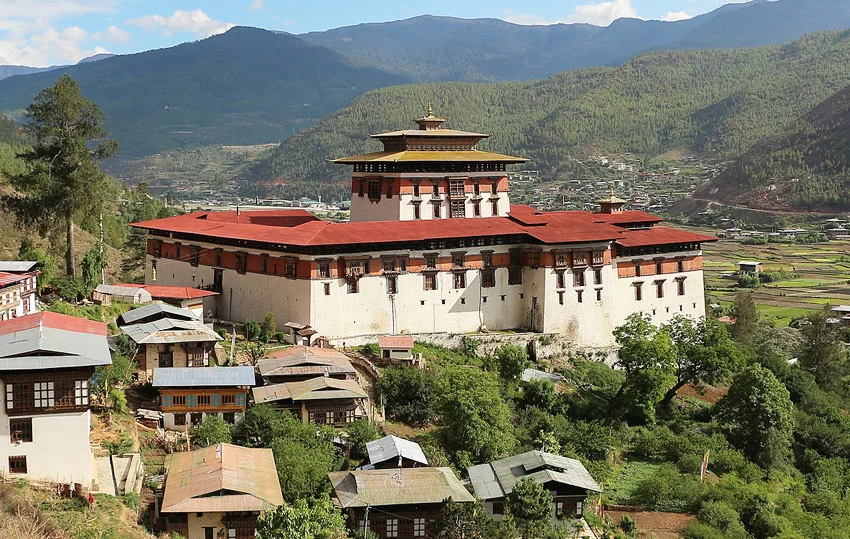
Overview:
Rinpung Dzong, translating to “Fortress on a Heap of Jewels,” is a splendid example of traditional Bhutanese architecture. Perched on a hillside overlooking the Paro Valley, this dzong plays a significant role in Bhutan’s religious and administrative life.
History:
Built in the 17th century by the order of Zhabdrung Ngawang Namgyal, Rinpung Dzong was initially constructed to defend the valley against Tibetan invasions. Over time, it evolved into a religious and administrative center.
Features:
The dzong houses several chapels and shrines, each adorned with intricate woodwork and vibrant murals. It also hosts the annual Paro Tshechu, a festival featuring masked dances and traditional performances, which attract visitors from all over Bhutan and beyond.
3. Kyichu Lhakhang
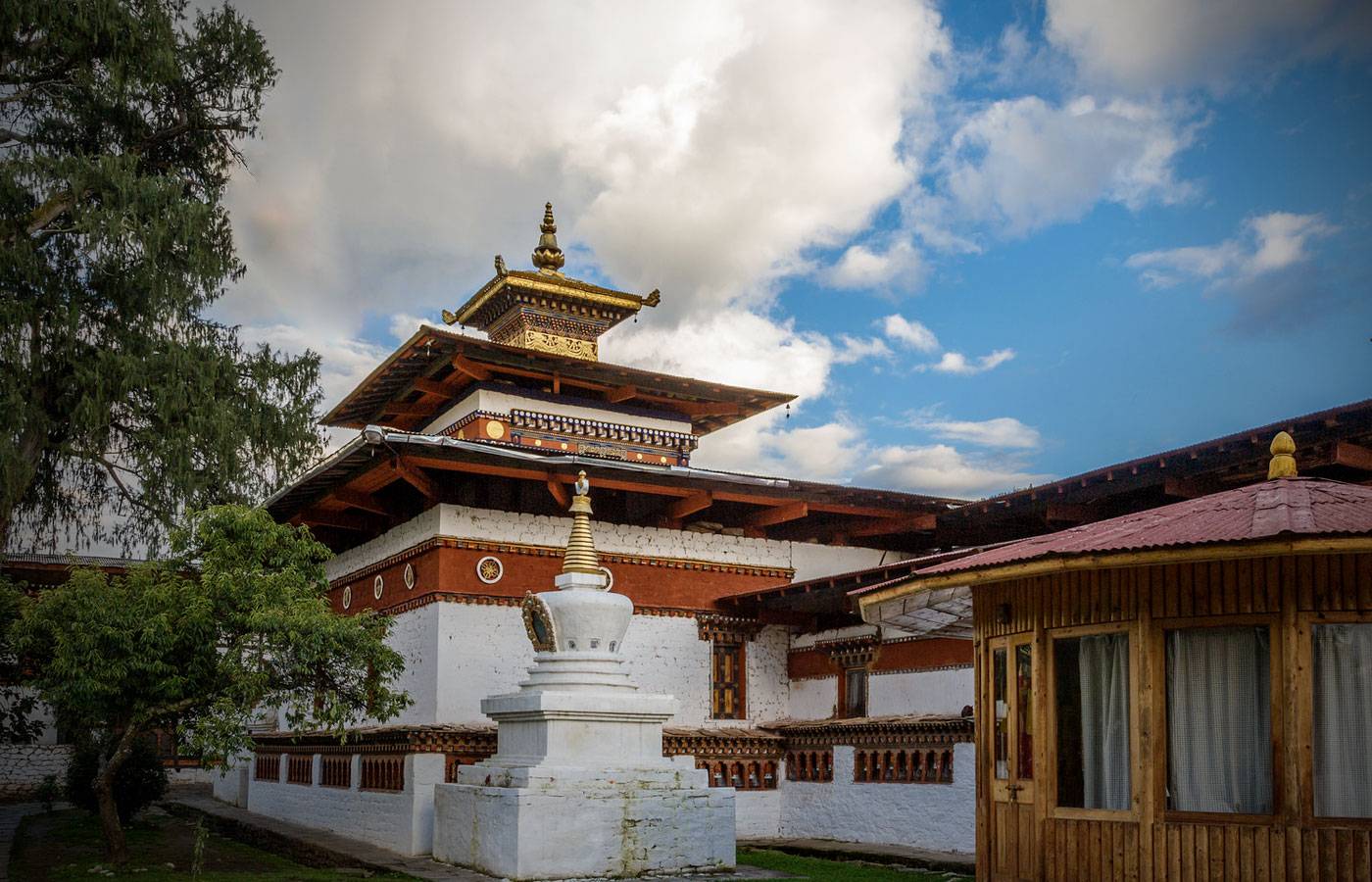
Overview:
Kyichu Lhakhang is one of Bhutan’s oldest and most revered temples, located in the scenic Paro Valley. This sacred site is a testament to the nation’s rich cultural and spiritual heritage.
History:
Believed to have been built in the 7th century by Tibetan Emperor Songtsen Gampo, Kyichu Lhakhang is dedicated to Guru Rinpoche. The temple’s architecture reflects traditional Bhutanese styles, featuring intricate woodwork, vibrant murals, and detailed carvings.
Significance:
Kyichu Lhakhang is an important pilgrimage site for Bhutanese Buddhists. Visitors can explore its serene courtyards and prayer halls, offering a glimpse into the spiritual heart of Bhutan.
4. National Museum of Bhutan

Overview:
Housed in the ancient Ta-dzong, a watchtower above Paro Dzong, the National Museum of Bhutan offers a fascinating journey through the nation’s cultural history.
History:
Established in 1968, the museum’s unique cylindrical structure and traditional design elements showcase Bhutanese craftsmanship. The Ta-dzong itself dates back to the 17th century and was originally built to defend Paro Dzong from invasions.
Exhibits:
The museum’s extensive collection includes ancient artifacts, traditional costumes, religious relics, and Bhutanese art. The exhibits provide insight into Bhutan’s history, culture, and traditions. The museum’s location offers stunning views of the Paro Valley and the surrounding mountains.
5. Drukgyel Dzong

Overview:
Drukgyel Dzong, known as the “Fortress of the Victorious Druk,” stands as a symbol of Bhutanese resilience. Located on a hill in the Paro Valley, this fortress tells tales of historic battles and triumphs.
History:
Constructed in the 17th century by Zhabdrung Ngawang Namgyal, Drukgyel Dzong was built to commemorate Bhutan’s victory over Tibetan invaders. Although a fire in the 1950s left the dzong in ruins, it remains a significant historical site.
Features:
Visitors can explore the remnants of its majestic walls and towers, which offer panoramic views of the valley and the sacred Mount Jomolhari. The site is an evocative reminder of Bhutan’s storied past and enduring spirit.
6. Chele La Pass
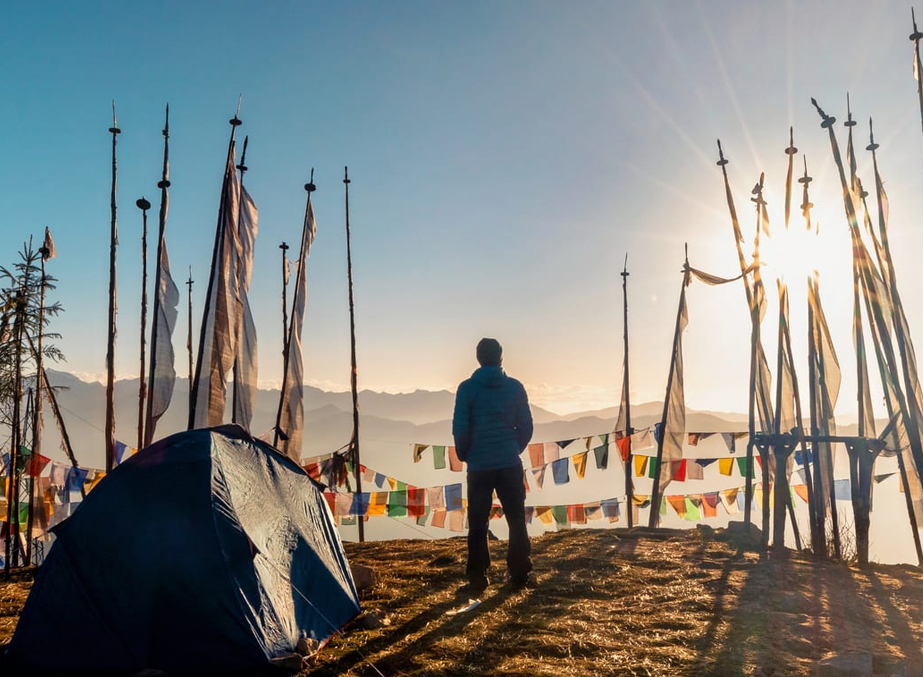
Overview:
Chele La Pass, the highest motorable pass in Bhutan at 3,988 meters (13,084 feet), connects the Paro and Haa Valleys. This breathtaking mountain pass provides stunning views and an exhilarating journey through Bhutan’s pristine landscapes.
Experience:
The drive to Chele La Pass meanders through dense pine forests and meadows. In spring, the landscape is painted with blooming rhododendrons, while autumn offers golden hues. The pass offers panoramic views of the Himalayan peaks, including the majestic Mount Jomolhari.
Activities:
Travelers can enjoy picnics, take photographs, and experience the tranquility of the high-altitude environment. The pass is also a starting point for several hiking trails that explore the surrounding natural beauty.
7. Paro Weekend Market
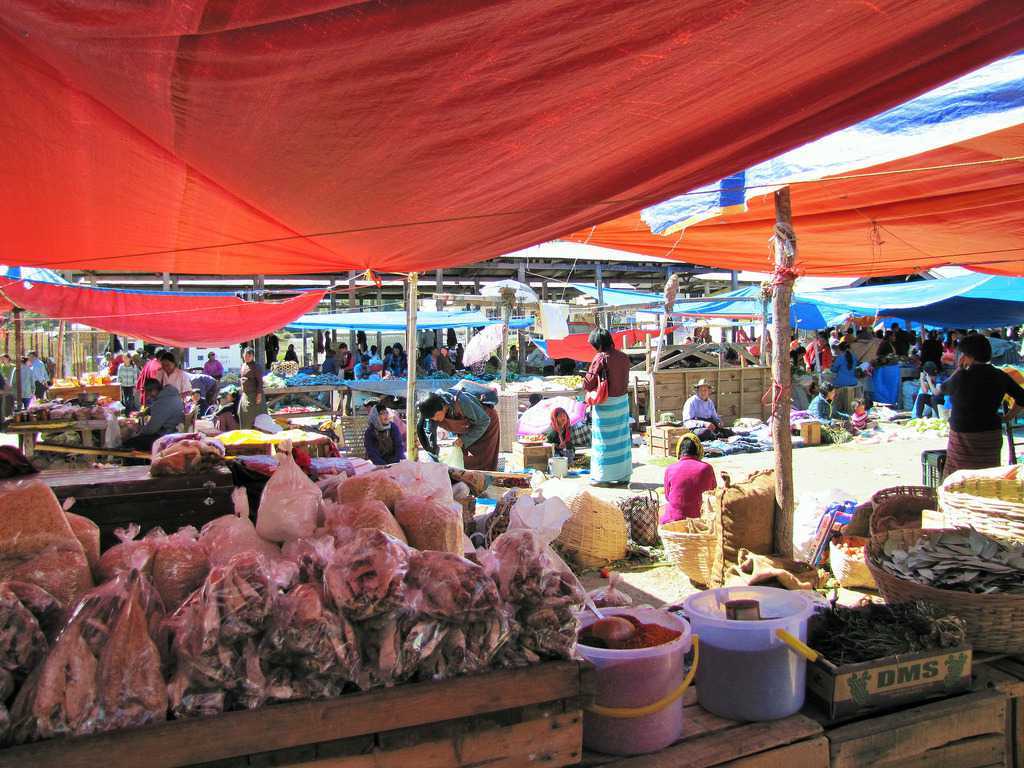
Overview:
The Paro Weekend Market is a vibrant celebration of Bhutanese culture and cuisine. Held every weekend in the heart of Paro, this bustling market is a hub of activity, attracting locals and tourists alike.
Experience:
As dawn breaks, the market comes alive with stalls offering fresh produce, handmade crafts, and traditional Bhutanese delicacies. The vibrant display of fruits, vegetables, and spices creates a visually captivating scene, while the scent of local herbs and spices tantalizes the senses.
Highlights:
Visitors can sample traditional foods, buy local crafts, and interact with the friendly locals. The market provides a unique opportunity to experience Bhutanese culture and daily life.
8. Dumtse Lhakhang

Overview:
Dumtse Lhakhang, located in the picturesque Paro Valley, is a unique 15th-century temple known for its cylindrical structure and artistic significance.
History:
Built by the iron-bridge builder Thangtong Gyalpo, Dumtse Lhakhang is an architectural marvel. Its three-story cylindrical design is rare in Bhutanese architecture.
Features:
The temple’s exterior is adorned with intricate woodwork and vibrant paintings depicting Buddhist themes and legends. Inside, visitors are treated to mesmerizing murals that narrate the life of the Buddha and various deities, offering a deep cultural and spiritual experience.
9. Farmhouse Visit
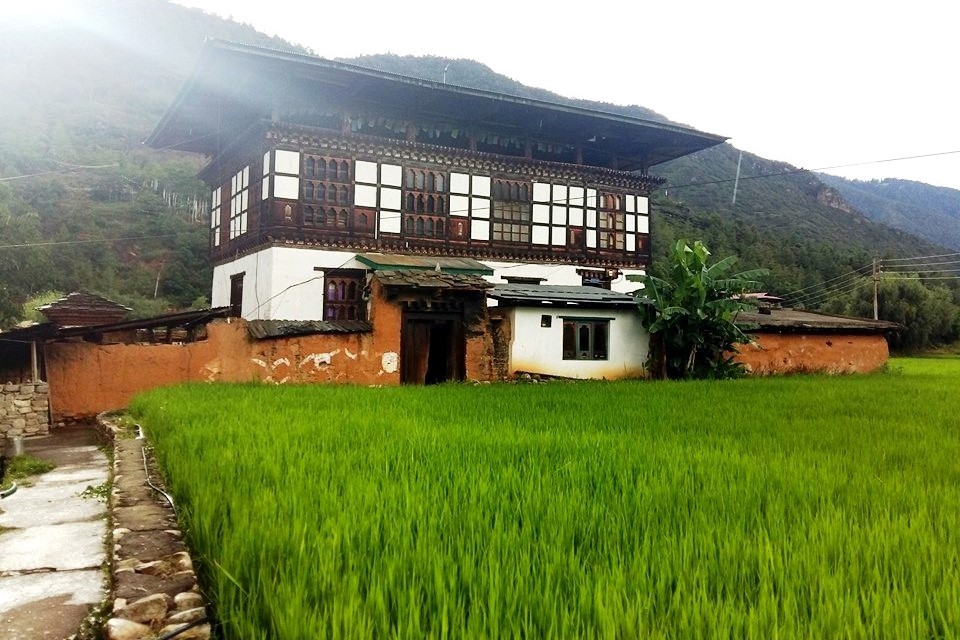
Overview:
A farmhouse visit in Paro offers a unique cultural adventure, providing insight into Bhutanese rural life. These visits allow guests to experience the kingdom’s agrarian lifestyle and warm hospitality.
Experience:
Traditional farmhouses are located amidst lush greenery and showcase Bhutanese architecture with intricately carved wooden windows and vibrant gardens. Visitors are welcomed with locally brewed butter tea and can engage in conversations about daily rural life.
Activities:
Guests can participate in farming activities, learn about traditional Bhutanese cooking, and enjoy home-cooked meals. A farmhouse visit provides an authentic experience of Bhutanese culture and traditions.
10. Jangtsa Dumtseg Lhakhang

Overview:
Jangtsa Dumtseg Lhakhang is a hidden gem in the Paro Valley, offering a unique blend of architectural splendor and natural beauty.
History:
Dating back to the 15th century, this temple was built by the Tibetan saint Thangtong Gyalpo. Its three-story structure is adorned with intricate woodwork and vibrant paintings.
Features:
Surrounded by lush greenery and overlooking the Paro River, Jangtsa Dumtseg Lhakhang provides a tranquil retreat for visitors. The temple’s interior is decorated with murals that depict esoteric Buddhist themes, making it a fascinating site for those interested in Bhutan’s spiritual heritage.
Conclusion
Paro, with its rich history and stunning natural landscapes, offers a myriad of attractions for visitors. From the iconic Tiger’s Nest monastery to the bustling Paro Weekend Market, each destination provides a unique glimpse into Bhutanese culture and heritage. Whether you’re exploring ancient temples, hiking through scenic passes, or immersing yourself in local traditions, Paro promises a memorable and enriching travel experience.

